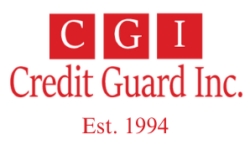
How Inflation is Clobbering Your Accounts Receivable
Canada’s annual inflation accelerated to 7.7% in May of 2022, a 39-year high and above market expectations of 7.4% (Statistics Canada). The central upward pressure came from transportation, food, and shelter as Western sanctions in response to Russian attacks on Ukraine continued to lift energy and commodities prices.
Transportation costs surged 14.6% (11.2% in April), underpinned by a 48% rise in gasoline prices (36.3% in April). Meanwhile, food inflation remained the same at 8.8%, carried by a 9.7% increase in prices for groceries. Also, shelter prices grew at the same pace of 7.4% as mortgages continued to rise. Excluding gasoline, the CPI rose at a record high of 6.3%. Every month, consumer prices rose 1.4%, surpassing market estimates of a 1% increase and picking up from a 0.6% increase in April – (Statistics Canada).
If you run a business, you may not have considered how inflation impacts your accounts receivable. Inflation is the decline of purchasing power of a given currency over time. This means your receivables are decreasing at the same rate as if you were paying extra interest of almost 8% (current inflation rate). Not only are your business costs higher, but so are your customers. The money you billed a customer last month will not go as far today as it did when you sent out the invoice.
Furthermore, if you or your customer has a mortgage or a line of credit, the cost of borrowing is rising swiftly. Rampant inflation means the Bank of Canada must raise rates above 3%, suggests one economist. Interest rate hikes are meant to curb inflation, yet it clobbers every individual and business that carries a mortgage or line of credit, driving up their costs.
If your customers owe money to your business and are in trouble now, expect things to get a whole lot worse, not better.
The number of bankruptcies filed by Canadian companies is on the rise. According to the Canadian Association of Insolvency and Restructuring Professionals (CAIRP), 807 business bankruptcies and proposals were filed in the first quarter of 2022. This is compared to 603 insolvencies filed at the same time last year. Timing is critical for a business owner. Your chance of collecting debt decreases the longer you wait, especially in today’s challenging economic times. With inflation aggressively diminishing the money owed to you and the cost of borrowing to support it on the rise, we’ve reached a boiling point. You can no longer justify subsidizing customers’ businesses by carrying overdue receivables.
Your accounts receivable are being clobbered simultaneously as your customers struggle to live up to their financial obligations, which is a dangerous combination. Don’t wait any longer; procrastination is the most significant cause of bad debt write-offs.
Let’s recover that debt while it has the greatest buying power for your business! Contact one of my collection experts or me if you need accounts receivable guidance.

